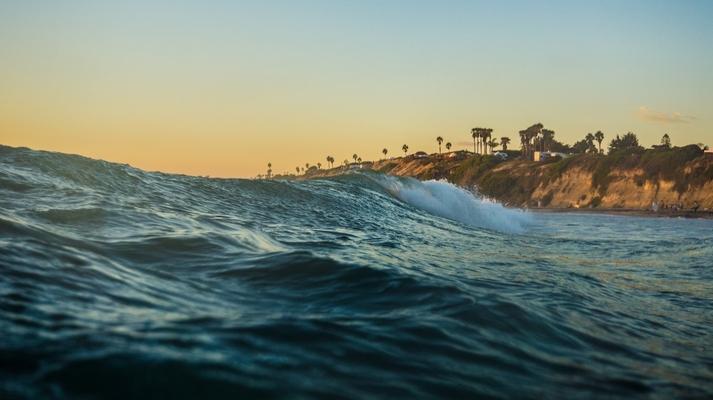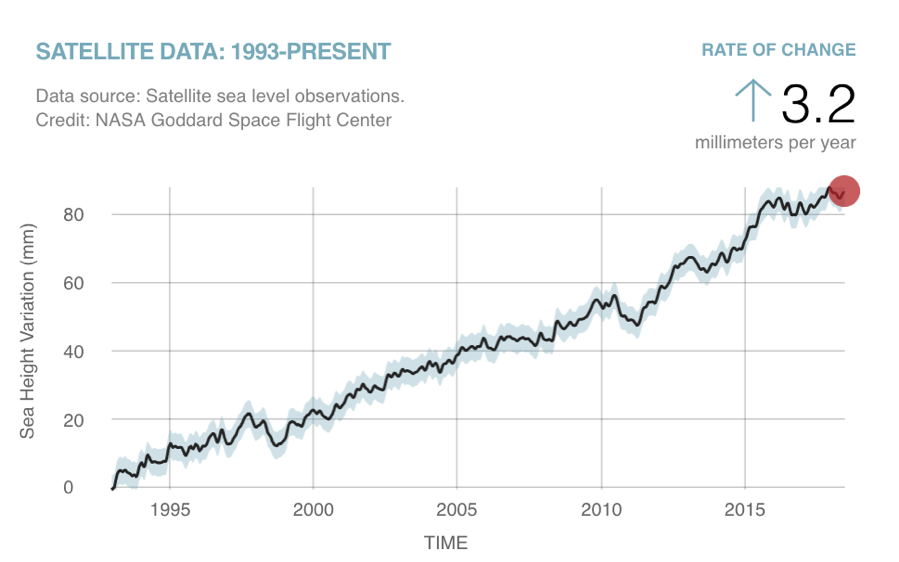
Get the Facts: Why Are Sea Levels Rising?
Of all the impacts of climate change, sea-level rise may be one of most well-known – perhaps because of its popularity in TV shows and blockbuster movies.
But – surprise, surprise – reality is a little more complicated than the movies. Don’t worry – we’ve got the facts. Here are your questions about sea-level rise, answered.
Sea-Level Rise: Defined
We can talk about sea-level rise in two different ways: relative sea-level rise and absolute sea-level rise. The Environmental Protection Agency (before it was headed up by climate deniers and industry lobbyists, that is) defined it well:
- “Relative sea level change is how the height of the ocean rises or falls relative to the land at a particular location.”
- “In contrast, absolute sea level change refers to the height of the ocean surface above the center of the earth, without regard to whether nearby land is rising or falling.”
Remember: Our oceans do not work like a bathtub or sink: when you fill up a tub with water, the water rises steadily. But research has shown that seas actually rise unevenly – putting some communities even more at risk than others. Relative sea levels are different because local factors are at play, like land subsidence (or sinking) and wind and ocean circulations.

Change in sea level since 1993 as observed by NASA satellites. (Source)
Why Are Sea Levels Rising?
We can’t overstate this: As our world becomes warmer and warmer, our seas will continue to rise. That’s because the number one cause of sea-level rise is climate change.
Here’s the breakdown:
As humans burn fossil fuels, we add more and more greenhouse gases (like carbon dioxide) to our atmosphere. These gases trap heat sort of like a blanket (or a greenhouse — that’s why it’s called the greenhouse effect) and make our world heat up.
While our globe warms, this added heat directly fuels sea-level rise in two big ways:
- The added heat melts glaciers and ice sheets. This means extra water flowing into our oceans, making them higher than they used to be. Massive ice sheets in Greenland and Antarctica – and land ice elsewhere – are weakening, breaking off, and melting. The ice melts and seas rise even more.
- Water expands as it warms. Imagine a pot of water heating on the stove. The volume of that water in the pot expands as it heats up. Now imagine the entire ocean doing that.
Why Is Sea-Level Rise Bad?
Get this: Eight of the world’s 10 largest cities are located near a coast. As sea levels rise, millions of people around the world are affected by increased coastal flooding and coastal erosion, as well as higher storm surges moving further inland.
We’re not talking about something happening in 10 years. We’re talking about something happening right now – and unless we act, the danger will only grow.
According to the latest report from the Intergovernmental Panel on Climate Change, if we can limit warming to 1.5 degrees Celsius (instead of the 2 degree target many policymakers use) by 2100, we’ll see slower sea-level rise and give vulnerable island nations and coastal communities more time to prepare and adapt. We have the power to determine what the future looks like for future generations, and it’s our responsibility to use it.
>> Related: 2030 or Bust: 5 Key Takeaways from the IPCC Report <<
What Can I Do?
Download our free fact sheet on sea-level rise – then, use it to talk to people you know about sea-level rise, climate change, and why we should take action. Our fact sheets are simple and straightforward, making it easy to understand complicated issues quickly.
If you want to branch out, we also have fact sheets covering renewable energy, fossil fuels, and the connections between infectious disease and the climate crisis.
Get the free Climate 101: Sea-Level Rise factsheet now!

